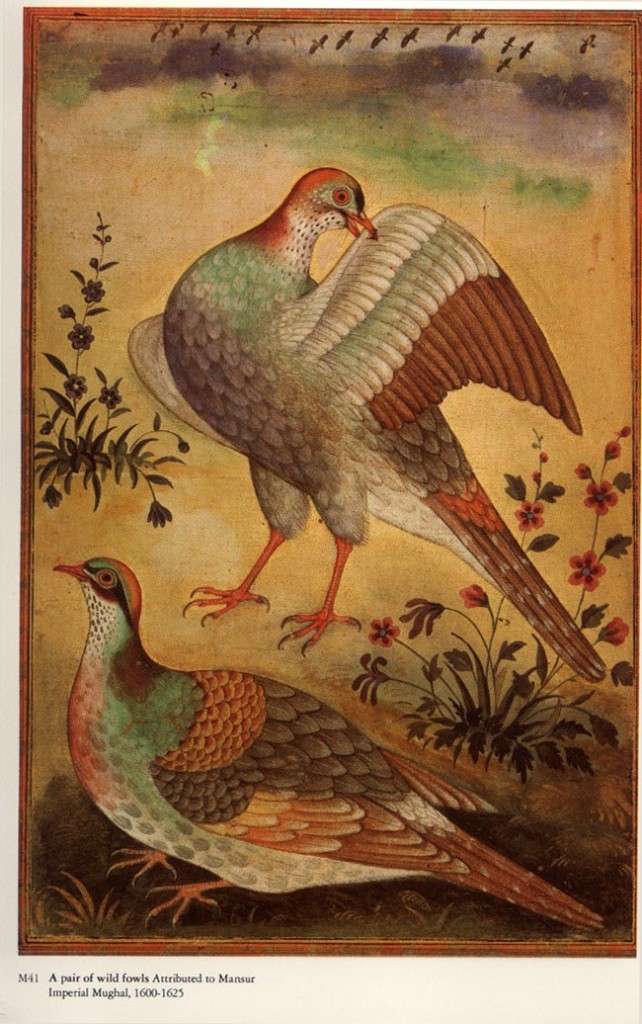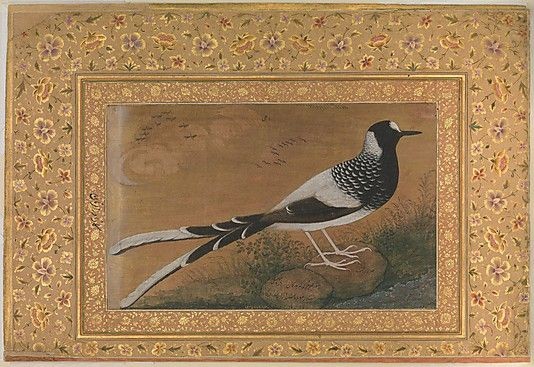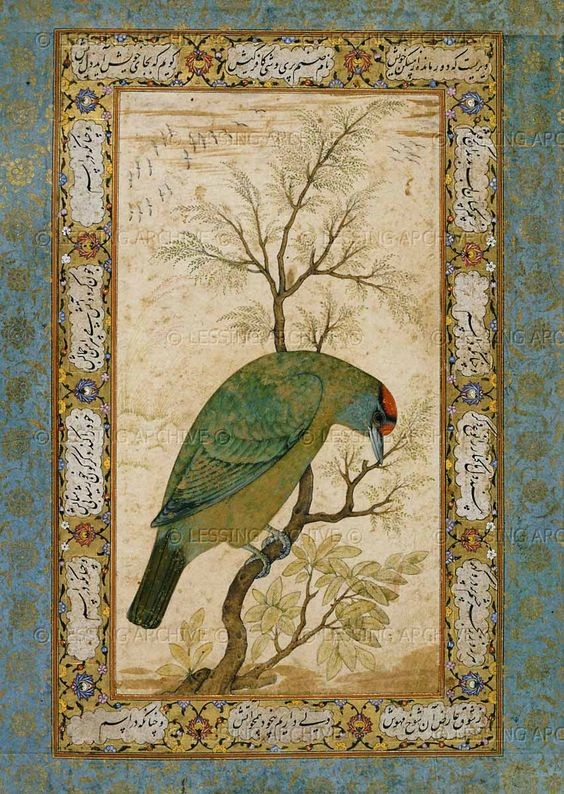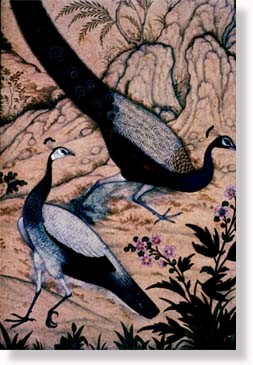
Portrayal of Animals in Miniature Paintings
Written by Hemavathy Guha

The very mention of the term miniature paintings makes us conjure visions of erstwhile royals in courtroom and hunting scenes, love scenes of Radha and Krishna from ‘Gita Govinda’ and ‘Rasamanjari’ and so on. Seldom do we picturise a miniature painting consisting of just a single bird or an animal, which are almost like a zoological study of these creatures executed for the sake of visually recording them in the absence of photographic equipment. Yet this is what many of the talented artists of the atelier of Akbar, Jehangir and to some extent of Shah Jahan also continued to execute as a specialty.

Miniature painting traditions existed in India from quite early times even before the advent of Mughal miniature paintings, in the form of illustrations for Buddhists and Jain manuscripts. These were earlier executed in palm leaf and later on in Paper. The Mughals who invaded India brought with them the rich tradition of manuscript painting of Persia which when combined with the Indian manuscript tradition provided the impetus for the Mughal miniature painting to flourish. Babur’s son Humayun was expelled from Hindustan and spent some years in Tabriz in Persia at the court of his cousin, where he came into contact with the work of a royal studio. Upon his return, he carried with him two master artists, Mir Sayyid Ali and Abdal Samad from Persia. Humayun died soon after and he was succeeded by Akbar in 1556. Akbar who had a great liking for art and painting wished to have the story of the legendary hero ‘Hamza’ painted and illustrated. This resulted in the creation of an Atelier of 30 artists by Akbar. The two Persian masters gave training to the artists . The folio of ‘Hamzanama’ created at this Atelier was published in AD 1567. Once the purpose was fulfilled, the atelier was disbanded. While Akbar, with an eye for the best, retained some of the finest of them, the rest dispersed to various Rajput and Mughal Kingdoms in the Deccan and founded what is now known as ‘Popular Mughal School’.

Akbar later shifted his capital to Lahore in 1580 and inducted many changes in his atelier also. Now assignments were being given to individual artists rather than to a team. Known as the Mature Mughal School, this was the period when techniques learned from Western paintings and prints in the form of chiaroscuro, space, volume and perspectives were introduced in miniature paintings too.

Jahangir, the fourth Mughal emperor, who was a great connoisseur of the arts succeeded Akbar. His memoir ‘Jahangirnama’ is full of descriptions of his hunting expeditions and the patronage he gave to artists and musicians. He was fond of hunting and traveling and the artists of his atelier like Mansur and Manohar traveled with him during his expeditions. He wished that whatever the words describe should also be visualized by the reader in the form of paintings. Whenever he spotted a rare bird or an animal, he immediately had it got painted. He also believed in a detailed study of the birds and animals with maximum characteristics drawn almost like a biological study rather than for adornment. In this manner, a vast collection of study of animals, birds and and even flowers were collected. One of his invaluable contribution is the study of a live Dodo, attributed to Mansur,which became extinct by the end of the 17th century.
The most famous artist of his atelier who specialized in nature studies were Mansur, Manohar, Govardhan, and Abu’l-Hasan. One of the paintings titled ‘Nilgai’, by Mansur, is a good study of the antelope, bringing out the beauty and graze of the animal alongwith the natural colour of the animal. The softness of the fur ,and the sharpness of the eyes can also be felt. The great hornbill painted by Mansur is another example. Mansur has also done a lot of study of flowers.

Abu’l –Hasan has done a remarkable study of the bird ‘spotted fork tail’ wherein the feathers and plume of the bird are executed intricately. In all these paintings of nature studies, the artist did not pay any heed to the atmosphere or surrounding in which the species lived or could be found. They limited themselves to painting a detailed study of the animal or the bird and provided a general background and elaborate calligraphic border. Thus, at some instances, a bird which lives by the side of a river maybe portrayed with opposite backgrounds.
In the memoirs of Babur and Jahangir, one comes across many such illustrations of birds and animals along with detailed descriptions. All together they provide an interesting account of the flora and fauna of our country during those days!
